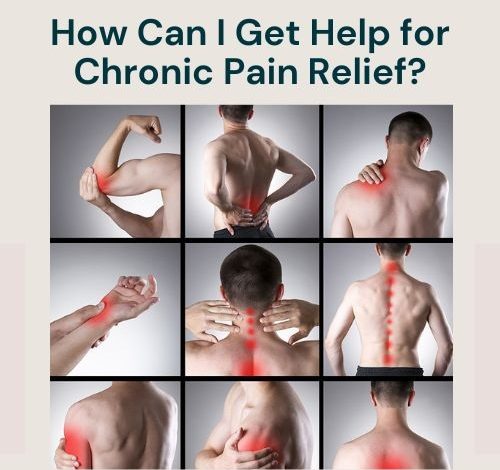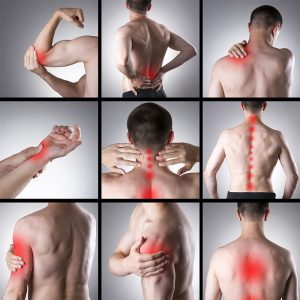How Can I Get Help for Chronic Pain Relief?

Living with chronic pain can feel like a never-ending battle. Whether it’s a dull ache, a stabbing sensation, or a burning discomfort that lingers day after day, chronic pain not only affects your body but also your mind, relationships, and quality of life. The good news? Chronic pain relief is achievable with the right strategy, support, and resources.
What chronic pain is, why it happens, and the wide range of options available to help you get the relief you deserve. Whether you’re dealing with arthritis, fibromyalgia, back pain, or nerve damage, this article is here to empower you on your journey to chronic pain relief.
Understanding Chronic Pain
Before diving into treatments and solutions, it’s important to understand what chronic pain actually is.
Chronic pain is defined as pain that lasts longer than 12 weeks or beyond the normal healing time. Unlike acute pain—which serves as a warning signal for injury—chronic pain persists and often becomes a condition in its own right.

Common causes of chronic pain include:
- Arthritis and joint disorders
- Back and neck injuries
- Fibromyalgia
- Neuropathic pain (nerve damage)
- Migraines and tension headaches
- Post-surgical pain
- Chronic fatigue syndrome
- Autoimmune diseases like lupus or multiple sclerosis
Regardless of its origin, the goal is the same: chronic pain relief that restores function, reduces suffering, and improves quality of life.
9 Chronic Pain Relief
Step 1: Getting a Proper Diagnosis
The first and most crucial step in achieving chronic pain relief is to get an accurate diagnosis.
Why a Diagnosis Matters
- Determines the root cause of your pain
- Rules out serious underlying conditions (e.g., cancer, infection)
- Helps customize an effective treatment plan
- Provides validation for your symptoms
Where to Start
- Primary Care Physician – Your general doctor can begin the assessment and refer you to specialists.
- Pain Specialists – These are physicians trained specifically in managing chronic pain conditions.
- Rheumatologists, Neurologists, Orthopedists – Depending on the nature of your pain, you may be referred to one or more of these experts.
Diagnostic tools may include physical exams, imaging (MRI, X-ray), blood tests, and neurological assessments.
Step 2: Medical Treatments for Chronic Pain Relief
Medical approaches are often the first line of defense in chronic pain management. They may include:
- Medications
- NSAIDs (e.g., ibuprofen, naproxen) – Reduce inflammation and mild to moderate pain.
- Acetaminophen – A safer option for many but may be less effective for severe pain.
- Antidepressants (e.g., amitriptyline) – Used in low doses to relieve nerve pain.
- Anticonvulsants (e.g., gabapentin, pregabalin) – Often prescribed for neuropathic pain.
- Topical Creams and Patches – Provide localized relief (e.g., lidocaine, capsaicin).
- Opioids – Reserved for severe pain and used under strict medical supervision due to risks of addiction.
- Injections and Procedures
- Steroid Injections – Reduce inflammation in joints and spinal nerves.
- Nerve Blocks – Temporarily interrupt pain signals.
- Radiofrequency Ablation – Burns nerve endings to stop pain transmission.
- Spinal Cord Stimulation – An implantable device that alters pain signals before they reach the brain.
Always discuss side effects, risks, and benefits with your provider.
Step 3: Physical Therapies for Chronic Pain Relief
Physical therapy is often a cornerstone of chronic pain relief, especially for musculoskeletal and neurological conditions.
Common Modalities Include:
- Exercise Therapy – Increases mobility, reduces stiffness, strengthens muscles.
- Massage Therapy – Improves blood flow, reduces muscle tension.
- Stretching and Yoga – Enhances flexibility, eases nerve pain, calms the mind.
- Hydrotherapy – Water-based exercises that reduce strain on joints.
A licensed physical therapist can tailor a plan based on your condition and limitations.
Step 4: Psychological and Behavioral Therapies
Chronic pain relief isn’t just physical—your mental and emotional state play a huge role in how pain is experienced.
- Cognitive Behavioral Therapy (CBT)
CBT teaches patients to reframe negative thoughts, reduce anxiety, and develop coping strategies. It has been shown to be effective in reducing pain intensity and improving quality of life.
- Mindfulness-Based Stress Reduction (MBSR)
This approach combines meditation, breathing exercises, and body awareness to help you stay present and reduce stress-related pain.
- Biofeedback
A technique that teaches you how to control physiological functions (e.g., heart rate, muscle tension) to manage pain.
Step 5: Alternative and Natural Therapies
Natural therapies are gaining popularity for chronic pain relief, especially among those seeking to minimize pharmaceutical dependence.
Popular Natural Therapies:
- Acupuncture – Stimulates specific points on the body to release endorphins and interrupt pain signals.
- Chiropractic Care – Adjusts misaligned joints to reduce nerve pressure.
- Herbal Remedies – Turmeric, ginger, willow bark, and CBD are commonly used for their anti-inflammatory effects.
- Supplements – Magnesium, omega-3s, and vitamin D may support pain management.
Dietary Considerations
An anti-inflammatory diet—rich in vegetables, fruits, whole grains, lean protein, and healthy fats—may contribute to chronic pain relief over time.
Avoiding processed foods, sugars, and trans fats can reduce systemic inflammation that exacerbates pain.
Step 6: Lifestyle Adjustments That Support Chronic Pain Relief
Sustainable chronic pain relief often depends on small, consistent lifestyle changes.
- Sleep Hygiene
Poor sleep can worsen pain perception. Aim for 7–9 hours of restful sleep each night by:
- Establishing a regular bedtime
- Avoiding screens before bed
- Keeping your bedroom cool and dark
- Using white noise or a sleep app
- Stress Management
Chronic stress tightens muscles, triggers headaches, and increases inflammation. Techniques include:
- Deep breathing
- Guided imagery
- Journaling
- Nature walks
- Weight Management
Excess weight increases strain on joints and may worsen conditions like arthritis and back pain.
- Smoking and Alcohol
Both can interfere with pain control. Quitting smoking and reducing alcohol intake can enhance treatment outcomes.

Step 7: Support Systems and Pain Advocacy
You don’t have to go through this journey alone. One of the most empowering steps in seeking chronic pain relief is building a support network.
- Support Groups
Online and in-person communities can provide emotional support, practical tips, and validation from others who understand.
- Pain Clinics
Multidisciplinary pain clinics bring together physicians, therapists, and psychologists to offer comprehensive treatment plans.
- Coaching and Patient Advocacy
Pain coaches help you navigate medical options, track progress, and build resilience. Patient advocates can assist with insurance, appointments, and legal rights.
Step 8: Exploring New and Emerging Treatments
Research into chronic pain relief is advancing rapidly. Depending on your condition, you may be eligible for newer or investigational treatments.
Examples:
- Regenerative Medicine – Including platelet-rich plasma (PRP) and stem cell therapy.
- Virtual Reality Therapy – Immersive distraction therapy for pain reduction.
- Ketamine Infusions – For treatment-resistant pain, especially neuropathic and CRPS.
- Neuromodulation Devices – Such as TENS units or wearable stimulators.
Always consult a specialist before trying experimental treatments.
Step 9: Creating a Personalized Chronic Pain Relief Plan
There’s no one-size-fits-all approach to chronic pain relief. Your best chance at lasting improvement comes from a plan tailored to your needs.
Building Your Plan:
- Identify your goals (e.g., walk without a cane, return to work, sleep through the night)
- Work with your healthcare team to outline medical and non-medical options.
- Track progress with a journal or app.
- Adjust as needed—pain conditions evolve, and so should your plan.
Final Thoughts: Hope Is the First Step Toward Chronic Pain Relief
Chronic pain may be a lifelong challenge, but it doesn’t have to define your life. With the right blend of medical care, therapies, lifestyle shifts, and support, chronic pain relief is within reach. Remember, you are not alone, and you deserve to feel better.
Take the first step today—talk to your doctor, explore your options, and begin crafting a life not limited by pain, but shaped by resilience, strength, and hope.
Key Takeaways
- Chronic pain relief starts with a proper diagnosis and personalized care plan.
- A combination of medical treatments, therapy, lifestyle changes, and natural remedies is often most effective.
- Support groups and pain clinics provide vital emotional and medical help.
- Never give up—relief is possible, and you are worth the effort.




